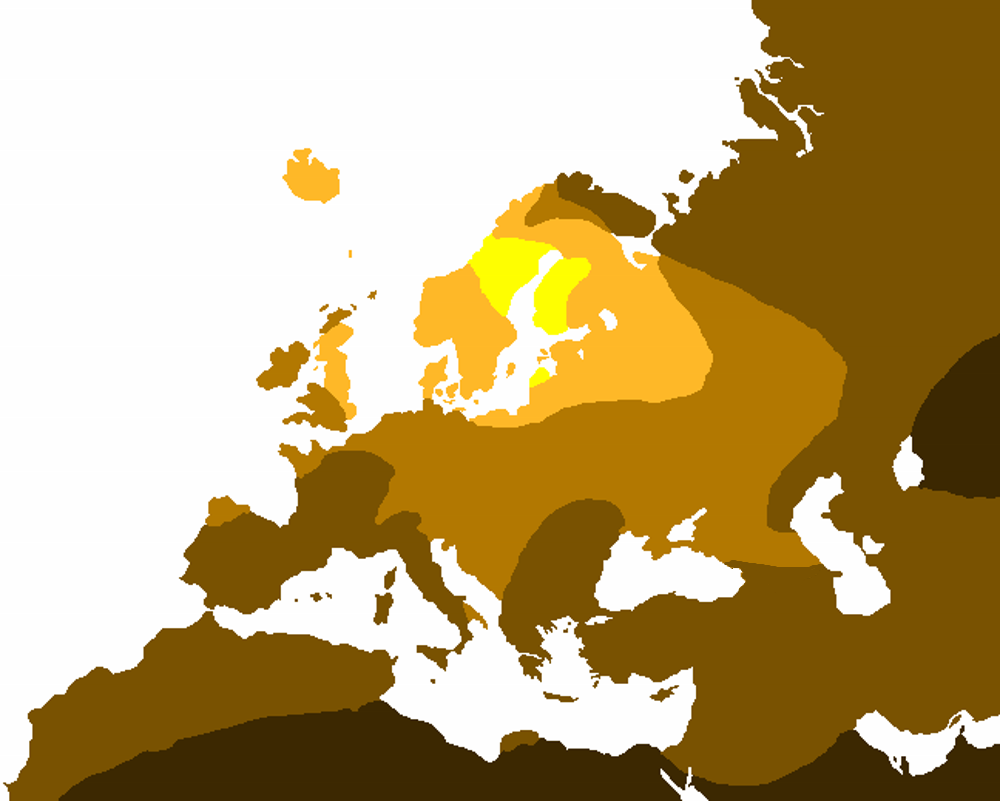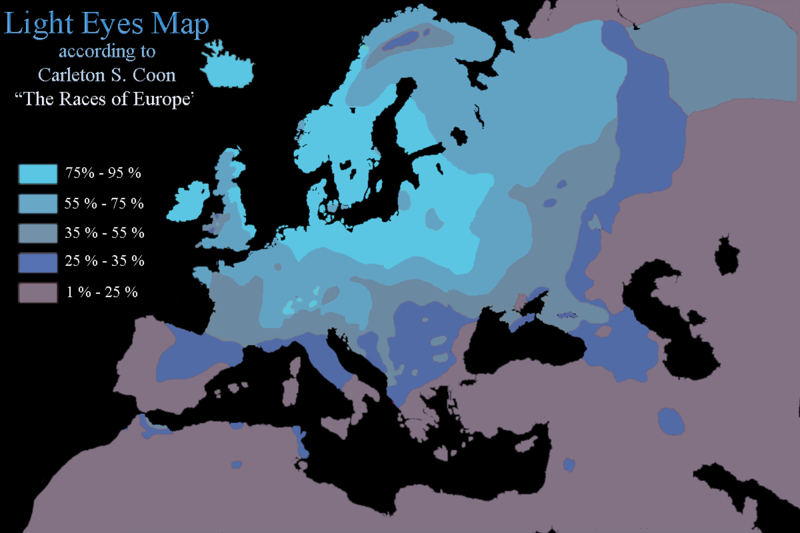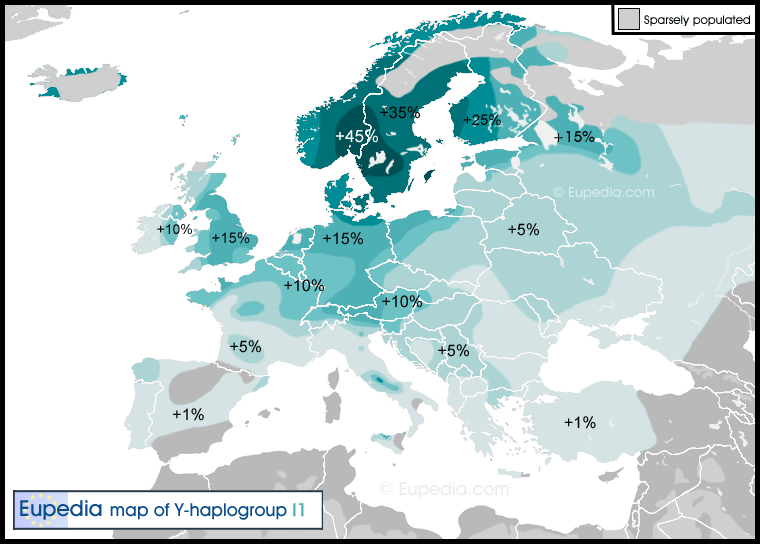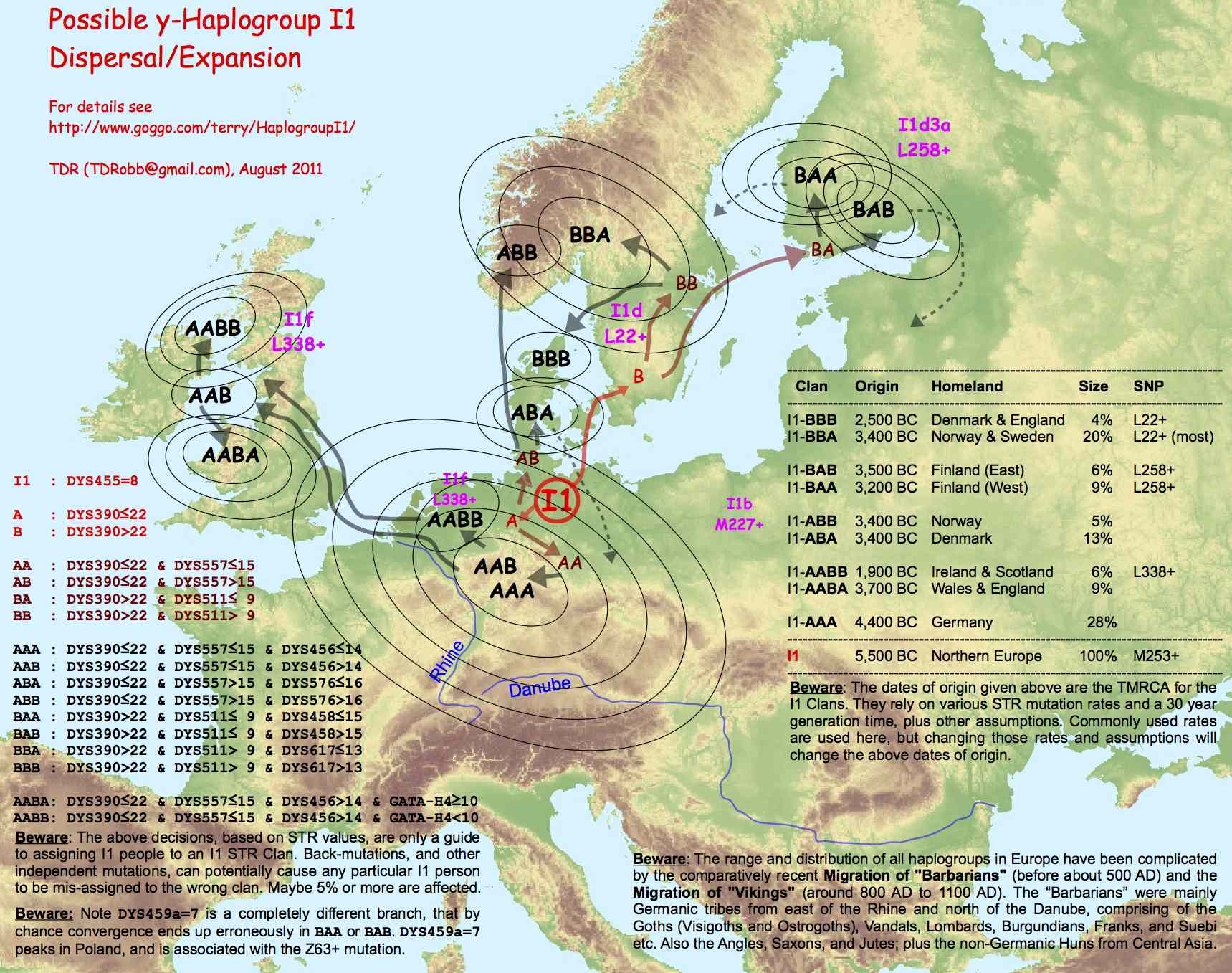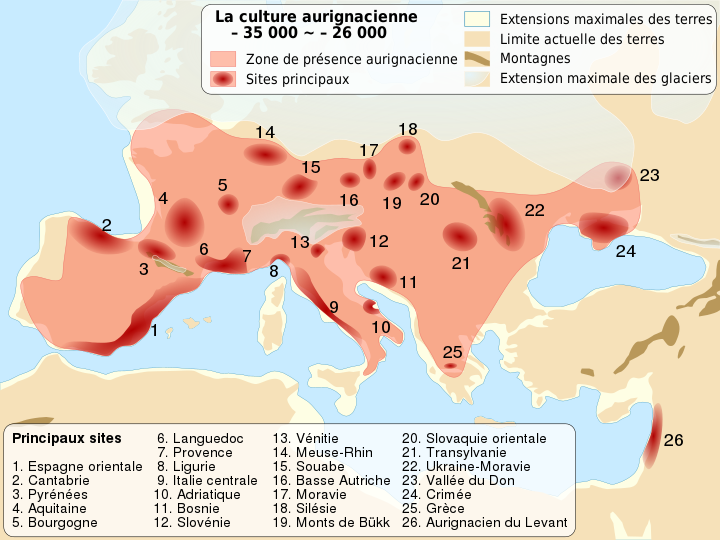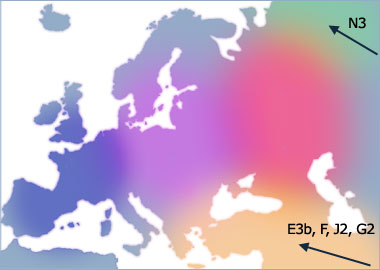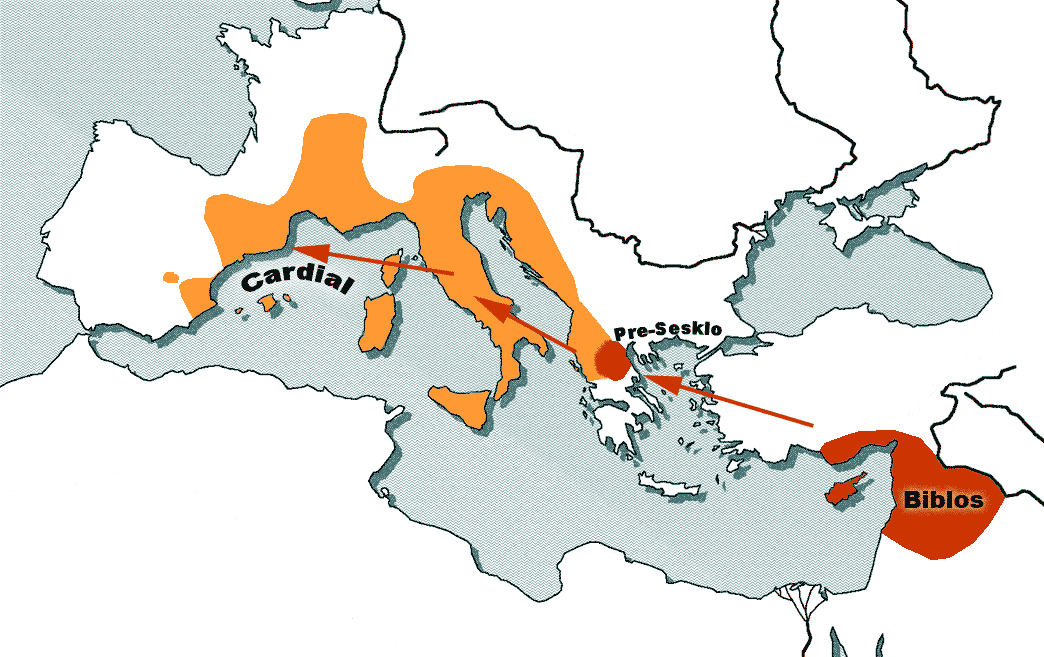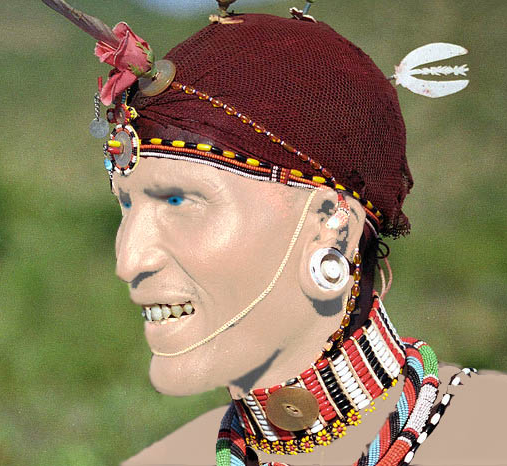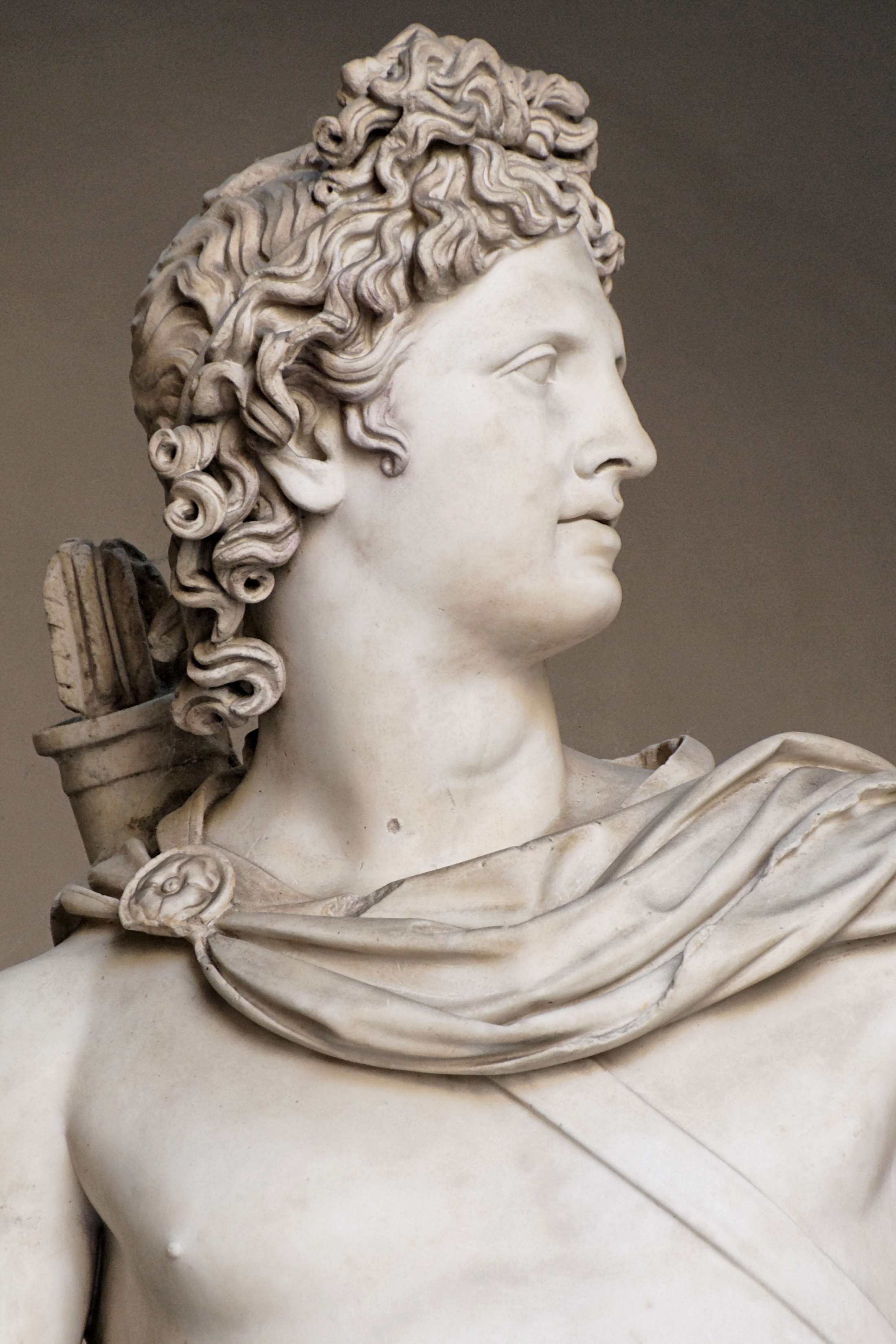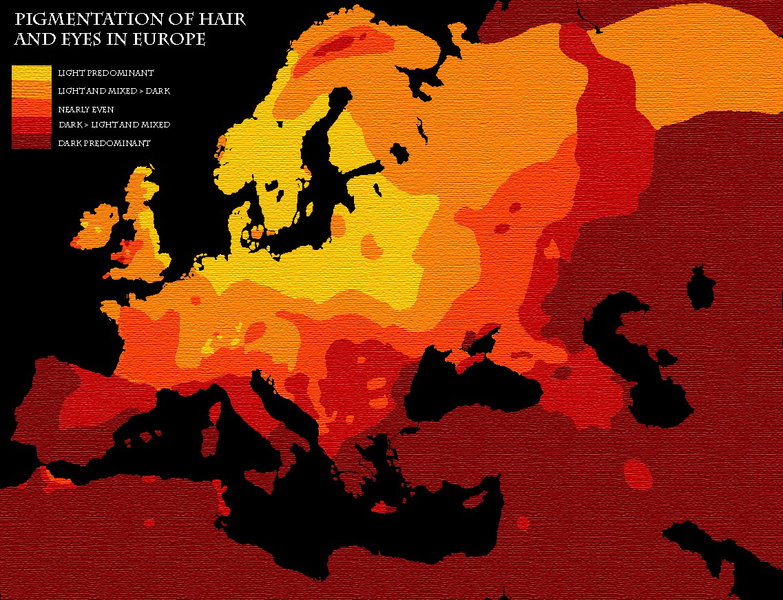![]()
![]()
![]()
The Taurus Mountains
The Taurus Mountains are a mountain complex in southern Turkey, dividing the Mediterranean coastal region of southern Turkey from the central Anatolian Plateau. The system extends along a curve from Lake Eğirdir in the west to the upper reaches of the Euphrates and Tigris rivers in the east. It is a part of the Alpide belt in Eurasia.
The bull
The bull was commonly the symbol and depiction of ancient Near Eastern storm gods, hence Taurus the bull, etc., and hence the name of the mountains. The mountains are a place of many ancient storm-god temples (Alberto Ravinell and Whitney Green, The Storm-god in the Ancient Near East, p. 126).
Torrential thunderstorms in these mountains were deemed by the ancient Syrians to be the work of the storm-god Adad to make the Tigris and Euphrates rivers rise and flood and thereby fertilise their land (H.W.F. Saggs, The greatness that was Babylon: a survey of the ancient civilization of the Tigris-Euphrates Valley, Sidgwick & Jackson, 2nd Revised edition, 1988, p. 380).
The pass known in antiquity as the Cilician Gates crosses the range north of Tarsus. During World War I, a German and Turkish railway system through the Taurus Mountains proved to be a major strategic objective of the Allies. This region was specifically mentioned as a strategically controlled objective slated for surrender to the Allies in the Armistice, which ended hostilities against the Ottoman Empire.
Kummanni
Kummanni (Hittite: Kummiya) was the name of a city in the kingdom of Kizzuwatna. It was the center of the kingdom, situated in the highlands. Primarily a Hurrian state, with a capital at Kummanni, Kizzuwatna remained an independent power until the late fifteenth century, when it was conquered by the Hurrian state of Mitanni.
Kummanni was the major cult center of the Hurrian chief deity, the mighty weather god Tešup. Its Hurrian name Kummeni simply translates as “The Shrine.” The city persisted into the Early Iron Age, and appears as Kumme in Assyrian records. It was located on the edge of Assyrian influence in the far northeastern corner of Mesopotamia, separating Assyria from Urartu and the highlands of southeastern Anatolia.
Its location is uncertain, but is believed to be near the classical settlement of Comana (Latin: Comana Cataoniae; frequently called Comana Chryse or Aurea, i.e. “the golden”, to distinguish it from Comana in Pontus), and later Cataonia (Latin: Comana Cataoniae; frequently called Comana Chryse, or Aurea, i.e. “the golden”, to distinguish it from Comana in Pontus), in Cappadocia, and later Cataonia.
The Hittite toponym Kummanni is considered likely to refer to Comana, but the identification is not considered proven. Its ruins are at the modern Turkish village of Şar, Tufanbeyli district, Adana Province.
Another epithet for the city of Comana, found in inscriptions, is Hieropolis ‘sacred city’, owing to a famous temple of the Syrian Moon goddess Enyo or, in the local language: Ma (cf. Men, the moon goddess of Caria).
Men, also known at Antioch in Pisidia as Men Ascaënus, was a god worshipped in the western interior parts of Anatolia. The roots of the Men cult may go back to Mesopotamia in the fourth millennium BC. Ancient writers describe Men as a local god of the Phrygians.
Lunar symbolism dominates his iconography. The god is usually shown with a crescent like open horns on his shoulders, and he is described as the god presiding over the months. He is depicted with a Phrygian cap and a belted tunic. He may be accompanied by bulls and lions in religious artwork. The iconography of Men partly recalls that of Mithras, who also wears a Phrygian cap and is commonly depicted with a bull and symbols of the sun and moon.
Dr Mehmet Taşlıalan, who has studied the remains of Antioch in Pisidia, has remarked that the people who settled on the acropolis in the Greek colonial era, carried the Men Askaenos cult down to the plain as Patrios Theos and in the place where the Augusteum was built there are some signs of this former cult as bucrania on the rock-cut walls. The Imperial Temple also features an unusual bucranium frieze.
In later times, Men may have been identified with both Attis, the consort of Cybele in Phrygian and Greek mythology, of Phrygia and Sabazius, the nomadic horseman and sky father god of the Phrygians and Thracians, of Thrace; he may shared a common origin with the Zoroastrian lunar divinity Mah, the Avestan language word for both the moon and for the Zoroastrian divinity that presides over and is the hypostasis of the moon.
Strabo and Julius Caesar visited it; the former enters into long details about its position in a deep valley on the Sarus (Seihoun) river. The temple and its fame in ancient times as the place where the rites of Ma-Enyo, a variety of the great west Asian nature-goddess, were celebrated with much solemnity.
Kumarbi
The three chief deities in the Urartian pantheon were the god of Ardini, the god of Kumenu, and the god of Tushpa. Kumarbi, the son of Anu (the sky) and the father of the storm god Teshub, is the chief god of the Hurrians. He was identified by the Hurrians with Sumerian Enlil, and by the Ugaritians with El. His home, as described in mythology, is the city of Urkesh.
Kumarbi is known from a number of mythological Hittite texts, sometimes summarized under the term “Kumarbi Cycle”. These texts notably include the myth of The Kingship in Heaven (also known as the Song of Kumarbi, or the “Hittite Theogony”, CTH 344), the Song of Ullikummi (CTH 345), the Kingship of the God KAL (CTH 343), the Myth of the dragon Hedammu (CTH 348), the Song of Silver (CTH 364).
The Song of Kumarbi or Kingship in Heaven is the title given to a Hittite version of the Hurrian Kumarbi myth, dating to the 14th or 13th century BC. It is preserved in three tablets, but only a small fraction of the text is legible.
The song relates that Alalu was overthrown by Anu who was in turn overthrown by Kumarbi. When Anu tried to escape, Kumarbi bit off his genitals and spat out three new gods. In the text Anu tells his son that he is now pregnant with the Teshub, Tigris, and Tašmišu. Upon hearing this Kumarbi spit the semen upon the ground and it became impregnated with two children. Kumarbi is cut open to deliver Tešub. Together, Anu and Teshub depose Kumarbi.
In another version of the Kingship in Heaven, the three gods, Alalu, Anu, and Kumarbi, rule heaven, each serving the one who precedes him in the nine-year reign. It is Kumarbi’s son Tešub, the Weather-God, who begins to conspire to overthrow his father.
In the Hurrian myth of Teshub’s origin he was conceived when the god Kumarbi bit off and swallowed his father Anu’s genitals, as such the Hurrian creation myth most likely shares a Proto-Indo-European cognate with the story from Greek mythology of Uranus, Cronus, and Zeus, which is recounted in Hesiod’s Theogony.
Teshub is depicted holding a triple thunderbolt and a weapon, usually an axe (often double-headed) or mace. The sacred bull common throughout Anatolia was his signature animal, represented by his horned crown or by his steeds Seri and Hurri, who drew his chariot or carried him on their backs.
According to Hittite myths, one of Teshub’s greatest acts was the slaying of the dragon Illuyanka. Myths also exist of his conflict with the sea creature (possibly a snake or serpent) Hedammu.
In the Hurrian schema, Teshub was paired with Hebat the mother goddess; in the Hittite, with the sun goddess Arinniti of Arinna – a cultus of great antiquity which has similarities with the venerated bulls and mothers at Çatalhöyük in the Neolithic era. His son was called Sarruma, the mountain god. The Phrygian goddess Cybele would then be the counterpart of the Hurrian goddess Hebat.
Hebat, Hepa; his wife, the mother goddess, regarded as the Sun goddess among the Hittites. Drawn from the Sumerian goddess Kubau, known as Hawwah, also known as Eve amongst the Aramaeans and some others.
Teshub’s brothers are Tigris (personification of the river), Ullikummi (stone giant), a giant stone monster, son of Kumarbi and the sea god’s daughter [Ullikummi's older brother, Hedammu, is a sea monster and appropriately the son of the sea god's daughter, Sertapsuruhi; Ullikummi himself is Kumarbi's son by a female cliff], and Tashmishu.
In Hittite and Hurrian mythology, Aranzah (or Aranzahas in the Hittite nominative form) is the Hurrian name of the Tigris River, which was divinized. He was the son of Kumarbi and the brother of Teshub and Tašmišu, one of the three gods spat out of Kumarbi’s mouth onto Mount Kanzuras. Later he colluded with Anu and the Teshub to destroy Kumarbi (The Kumarbi Cycle).
Ishkur in Sumerian, Adad in Akkadian, Amurru in Amoritic and Hadad in Aramaic
Kummanni, also known as Kumme, was still considered a holy city in Assyrian times, both in Assyria and in Urartu. Adad-nirari II, generally considered to be the first King of Assyria in the Neo-Assyrian period, after re-conquering the city, made sacrifices to “Adad of Kumme.”
Adad-nirari II is generally considered to be the first King of Assyria in the Neo-Assyrian period. He firmly subjugated the areas previously under only nominal Assyrian vassalage, conquering and deporting troublesome Aramean, Neo-Hittite and Hurrian populations in the north to far-off places.
Adad-nirari II then twice attacked and defeated Shamash-mudammiq of Babylonia, annexing a large area of land north of the Diyala River and the towns of Hīt and Zanqu in mid Mesopotamia. He made further gains over Babylonia under Nabu-shuma-ukin I later in his reign. He also campaigned to the west, subjugating the Aramean cities of Kadmuh and Nisibin. Along with vast amounts of treasure collected, he also secured the Kabur river region.
Ishkur in Sumerian, Adad in Akkadian, Amurru in Amoritic and Hadad in Aramaic are the names of the storm-god in the Babylonian-Assyrian pantheon. All three are usually written by the logogram dIM. The Akkadian god Adad is cognate in name and functions with northwest Semitic god Hadad.
In Akkadian, Adad is also known as Ramman (“Thunderer”) cognate with Aramaic Rimmon which was a byname of the Aramaic Hadad. Ramman was formerly incorrectly taken by many scholars to be an independent Babylonian god later identified with the Amorite god Hadad.
Amurru and Martu are names given in Akkadian and Sumerian texts to the god of the Amorite/Amurru people, often forming part of personal names. He is sometimes called Ilu Amurru (MAR.TU).
Amurru/Martu was probably a western Semitic god originally. He is sometimes described as a ‘shepherd’ or as a storm god, and as a son of the sky-god Anu. He was the patron god of the Mesopotamian city of Ninab, whose exact location is unknown.
Amurru also has storm-god features. Like Adad, Amurru bears the epithet ramān ‘thunderer’, and he is even called bāriqu ‘hurler of the thunderbolt’ and Adad ša a-bu-be ‘Adad of the deluge’. Yet his iconography is distinct from that of Adad, and he sometimes appears alongside Adad with a baton of power or throwstick, while Adad bears a conventional thunderbolt.
Amurru’s wife is sometimes the goddess Ašratum (see Asherah) who in northwest Semitic tradition and Hittite tradition appears as wife of the god Ēl which suggests that Amurru may indeed have been a variation of that god. If Amurru was identical with Ēl, it would explain why so few Amorite names are compounded with the name Amurru, but so many are compounded with Il; that is, with Ēl.
The Baal Cycle is a Ugaritic cycle of stories about the Canaanite god Baal, also known as Hadad the god of rain, storm and fertility. They are written in Ugaritic, a language written in a cuneiform alphabet, on a series of clay tablets found in the 1920s in the Tell of Ugarit (modern Ras Shamra), situated on the Mediterranean coast of northern Syria, a few kilometers north of the modern city of Latakia, far ahead of the now known coast.
The Sumerian Ishkur appears in the list of gods found at Fara but was of far less importance than the Akkadian Adad later became, probably partly because storms and rain are scarce in southern Babylonia and agriculture there depends on irrigation instead. Also, the gods Enlil and Ninurta also had storm god features which decreased Ishkur’s distinctiveness. He sometimes appears as the assistant or companion of one or the other of the two.
When Enki distributed the destinies, he made Ishkur inspector of the cosmos. In one litany Ishkur is proclaimed again and again as “great radiant bull, your name is heaven” and also called son of An, lord of Karkara; twin-brother of Enki, lord of abundance, lord who rides the storm, lion of heaven.
In other texts Adad/Ishkur is sometimes son of the moon god Nanna/Sin by Ningal and brother of Utu/Shamash and Inana/Ishtar. He is also occasionally son of Enlil. Adad/Ishkur’s special animal is the bull. He is naturally identified with the Anatolian storm-god Teshub.
Adad/Ishkur’s consort (both in early Sumerian and later Assyrian texts) was Shala, a goddess of grain, who is also sometimes associated with the god Dagan. She was also called Gubarra in the earliest texts. The fire god Gibil (named Gerra in Akkadian) is sometimes the son of Ishkur and Shala.
The lamassu
A lamassu is a protective deity, often depicted with a bull or lion’s body, eagle’s wings, and human’s head. In some writings, it is portrayed to represent a female deity. A less frequently used name is shedu which refers to the male counterpart of a lamassu.
The lamassu is a celestial being from Mesopotamian mythology. Human above the waist and a bull below the waist, it also has the horns and the ears of a bull. It appears frequently in Mesopotamian art, sometimes with wings. The lamassu and shedu were household protective spirits of the common Babylonian people, becoming associated later as royal protectors, were placed as sentinels at the entrances.[citation needed] The Akkadians associated the god Papsukkal with lamassu and the god Išum with shedu.
To protect houses, the lamassu were engraved in clay tablets, which were then buried under the door’s threshold. They were often placed as a pair at the entrance of palaces. At the entrance of cities, they were sculpted in colossal size, and placed as a pair, one at each side of the door of the city, that generally had doors in the surrounding wall, each one looking towards one of the cardinal points.
Adana
Adana’s name has had many different versions over the centuries: Adanos, Ta Adana, Uru Adaniya, Erdene, Edene, Ezene, Batana, Atana, Azana, Addane. The city Adana in southern Turkey is situated on the Seyhan River, 30 kilometres (19 miles) inland from the Mediterranean Sea, in south-central Anatolia. It is the administrative seat of the Adana Province and has a population of 1.6 million, making it the most populated city of the region. It is a major agricultural and commercial center.
Adana-Mersin metropolitan area, with a population of over 3 million, stretches over 70 kilometres (43 miles) from east to west and 25 kilometres (16 miles) from north to south; encompassing the cities of Mersin, Tarsus and Adana.
Adana Province is a province of Turkey located in south-central Anatolia. With a population of 2,085,225, it is the fifth most populous province in Turkey. The administrative seat of the province is the city of Adana, home to 78% of the residents of the province.
Adana is located in the heart of Çukurova, historically known as Cilicia, at the northeastern edge of the Mediterranean, where it serves as the gateway to the Çukurova plain, which has historically been known in the West as the Cilicia plain. This large stretch of flat, fertile land covers a geographical, economical and cultural region that includes the provinces of Mersin, Adana, Osmaniye, and Hatay southeast of the Taurus Mountains. Home to approximately six million people, the region is mostly a large stretch of flat, fertile land regarded as one of the most agriculturally productive areas of the world.
From Adana, crossing the Çukurova westwards, the road from Tarsus enters the foothills of the Taurus Mountains. The temperature decreases with every foot of ascent, as the road reaches an altitude of nearly 4,000 feet (1,200 m). It goes through the famous Cilician Gates, the rocky pass through which armies have coursed since the dawn of history, and continues to the Anatolian plain.
This region lies to the north-east of Cyprus, on the southern Anatolian coast where it meets Syria, stretching from its eastern plains (Celicia Pedias, or ‘flat’) to the rugged western section (Celicia Trachea, or ‘rugged’), formed by spurs of the Taurus mountains.
The history of the Tepebağ tumulus in the middle of Adana dates to the Neolithic Period, 6000 B.C., and the time of the first human settlements. It is considered to be the oldest city of the Çukurova region. A place called Adana is mentioned by name in a Sumerian epic, the Epic of Gilgamesh, but the geography of this work is too imprecise to identify its location.
Although it had been inhabited since the eighth millennium BC, it first emerged into history during the Hittite period where it formed part of Kizzuwatna, which according to the Hittite inscription of Kava, found in Hattusa (Boğazkale), was the first kingdom that ruled the ancient city of Adaniya, under the protection of the Hittites by 1335 BC.
At that time, the name of the city was Uru Adaniyya, and the inhabitants were called Danuna, and was one of the groups constituting the Sea Peoples, who were of Indo-European origin.
Beginning with the collapse of the Hittite Empire, c. 1191-1189 BC, invasions from the west caused a number of small kingdoms to take control of the plain, as follows: Quwê Assyrians, 9th century BC; Persians, 6th century BC; Alexander the Great in 333 BC; Seleucids; the pirates of Cilicia; Roman statesman Pompey the Great; and the Armenian Kingdom of Cilicia (Cilician Kingdom).
Khilakku (Cilicia) was a Luwian-speaking neo-Hittite state which emerged in former south-western Kizzuwatna in the mid-ninth century BC. It occupied a pocket of territory on the fertile coastal plains of Çukurova, ancient Cilicia, which was sandwiched between Tabal to the north and the kingdom of Que to the east. Its earlier Anatolian name of Khilikku came to be known as Cilicia by later Greeks and Romans.
In the 5th century BC Cilicia is invaded and annexed by Babylonian king Nergalsharusur, although some sources state that Appuashu resists him. The Persians take control of Cilicia. Although Appuashu probably resists again, this time he is unsuccessful and probably becomes a vassal for a decade or so. The region eventually forms part of the wide swathe of lands under the control of the Armenians and later the Lesser Armenians.
The history of Adana is intrinsically linked to the history of Tarsus, a historic city in south-central Turkey, 20 km inland from the Mediterranean Sea. They often seem to be the same city, moving as the neighbouring Seyhan River changed its position. Their respective names also changed over the course of the centuries. Adana was of relatively minor importance during the Roman’s influential period, while nearby Tarsus was the metropolis of the area.
Tarsus was located at the crossing of several important trade routes, linking Anatolia to Syria and beyond. Because the ruins are covered by the modern city, archaeology has barely touched the ancient city.
The ancient name is Tarsos, derived from “Tarsa”, the original name of the city in the Hittite language, which was possibly derived from a pagan god, Tarku, as Hittites were the first settlers. Excavation of the mound of Gözlükule, a tumulus within the borders of Tarsus city, Mersin Province, reveals that the prehistorical development of Tarsus reaches back to the Neolithic Period and continues unbroken through Chalcolithic and Early Bronze Ages.
With a history going back over 6,000 years, Tarsus has long been an important stop for traders, a focal point of many civilisations including the Roman Empire, when Tarsus was capital of the province of Cilicia, the scene of the first meeting between Mark Antony and Cleopatra, where Paul the Apostle was born.
Located on the mouth of the Berdan River (Cydnus of the antiquity), which empties into the Mediterranean Sea, Tarsus is a junction point of land and sea routes connecting the Cilician plain (today called Çukurova), central Anatolia and the Mediterranean sea. The climate is typical of the Mediterranean region, summers very very hot, winters chilly and damp.
Initially settled in the Neolithic Period, Gözlükule became an important settlement and a port during the 2nd millennium BC. It was located at the intersection of the main road systems, one following the Mediterranean sea side, the other following valleys through Toros Mountains to Anatolian plateau (so called Cicilian Gates). Eventually the city of Tarsus was established just north of Gözlükule. But Gözlükule was still active as the port of Cilicia. In 41 BC Cleopatra VII and Mark Antony entered Tarsus using the port of Gözlükule.
During the era of Pompey, the city was used as a prison for the pirates of Cilicia. For several centuries thereafter, it was a waystation on a Roman military road leading to the East. After the permanent split of the Roman Empire in 395 AD, the area became a part of the Byzantine Empire, and was probably developed during the time of Julian the Apostate.
With the construction of large bridges, roads, government buildings, irrigation and plantation, Adana and Cilicia became the most developed and important trade centers of the region. Ayas (today Yumurtalık), and Kozan (formerly Sis) were the other major urban and administrative centers in the area, especially during the period of the Cilicians.
Tarsus has a long history of commerce and is still a commercial centre today, trading in the produce of the fertile Çukurova plain; also Tarsus is a thriving industrial centre of refining and processing that produces some for export. Industries include agricultural machinery, spare parts, textiles, fruit-processing, brick building and ceramics.
Agriculture is an important source of income, half of the land area in the district is farmland (1,050 km²) and most of the remainder is forest and orchard. The farmland is mostly well-irrigated, fertilised and managed with the latest equipment.
Cilicia
The Cilician Gates or Gülek Pass is a pass through the Taurus Mountains connecting the low plains of Cilicia to the Anatolian Plateau, by way of the narrow gorge of the Gökoluk River. Its highest elevation is about 1000m.
The Cilician Gates have been a major commercial and military artery for millennia. In the early 20th century, a narrow-gauge railway was built through them, and today, the Tarsus-Ankara Highway (E90, O-21) passes through them.
The southern end of the Cilician gates is about 44 km north of Tarsus and the northern end leads to Cappadocia. This coast has been inhabited since the 9th millennium BC.
Cilicia was settled from the Neolithic period onwards. Dating of the ancient settlements of the region from Neolithic to Bronze Age is as follows: Aceramic/Neolithic: 8th and 7th millennia BC; Early Chalcolithic: 5800 BC; Middle Chalcolithic (correlated with Halaf and Ubaid developments in the east): c. 5400-4500 BC; Late Chalcolithic: 4500- c. 3400 BC; and Early Bronze Age IA: 3400-3000 BC; EBA IB: 3000-2700 BC; EBA II: 2700-2400 BC; EBA III A-B: 2400-2000 BC.
In antiquity, Cilicia was the south coastal region of Asia Minor, south of the central Anatolian plateau. It existed as a political entity from Hittite times into the Byzantine Empire. Cilicia extends inland from the southeastern coast of modern Turkey, due north and northeast of the island of Cyprus.
Cilicia extended along the Mediterranean coast east from Pamphylia, to the Amanus Mountains, which separated it from Syria. North and east of Cilicia lie the rugged Taurus Mountains that separate it from the high central plateau of Anatolia, which are pierced by a narrow gorge, called in Antiquity the Cilician Gates.
Ancient Cilicia was naturally divided into Cilicia Trachaea and Cilicia Pedias divided by the Lamas Su. Salamis, the city on the east coast of Cyprus, was included in its administrative jurisdiction.
The Greeks invented for Cilicia an eponymous Hellene founder in the purely mythic King Cilix, but the historic founder of the dynasty that ruled Cilicia Pedias was Mopsus, identifiable in Phoenician sources as Mpš, the founder of Mopsuestia who gave his name to an oracle nearby. Homer mentions the people of Mopsus, identified as Cilices, as from the Troad in the northernwesternmost part of the peninsula.
The kings of Adana are traced from the “house of Mopsos,” given in hieroglyphic Luwian as Moxos and in Phoenician as Mopsos, in the form mps. They were called the Dananiyim. The area also reports a Mopsukrene (Mopsus’ fountain in Greek) and a Mopsuhestia (Mopsus’ hearth in Greek), also in Cilicia.
Mopsus or Mopsos was the name of two famous seers in Greek mythology. A historical or legendary Mopsos or Mukšuš may have been the founder of a house in power at widespread sites in the coastal plains of Pamphylia and Cilicia (today’s Turkey) during the early Iron Age.
Mopsus, a celebrated seer and diviner, was the son of Manto, daughter of the mythic seer Tiresias, and of Rhacius of Caria or of Apollo himself, the oracular god. Greeks of the Classical age accepted Mopsus as a historical figure, though the anecdotes concerning him bridge legend and myth.
Cilicia Trachea (“rugged Cilicia”; the Assyrian Khilakku or Khilikku, also sometimes transcribed as Hilakku or Hilikku, classical “Cilicia”) is a rugged mountain district formed by the spurs of Taurus, which often terminate in rocky headlands with small sheltered harbors, a feature which, in classical times, made the coast a string of havens for pirates, but which in the Middle Ages led to its occupation by Genoese and Venetian traders.
The district is watered by the Calycadnus and was covered in ancient times by forests that supplied timber to Phoenicia and Egypt. Cilicia lacked large cities.
Cilicia Pedias (“flat Cilicia”— Greek: Κιλικία Πεδιάς; Assyrian Kue), to the east, included the rugged spurs of Taurus and a large coastal plain, with rich loamy soil, known to the Greeks such as Xenophon, who passed through with his 10,000 Greek mercenaries, for its abundance (euthemia), filled with sesame and millet and olives and pasturage for the horses imported by Solomon. Many of its high places were fortified.
The plain is watered by the three great rivers, the Cydnus (Tarsus Çay), the Sarus (Seyhan) and the Pyramus (Ceyhan), each of which brings down much silt from the deforested interior and which fed extensive wetlands. The Sarus now enters the sea almost due south of Tarsus, but there are clear indications that at one period it joined the Pyramus, and that the united rivers ran to the sea west of Kara-tash. Through the rich plain of Issus ran the great highway that linked east and west, on which stood the cities of Tarsus (Tarsa) on the Cydnus, Adana (Adanija) on the Sarus, and Mopsuestia (Missis) on the Pyramus.
The area had been known as Kizzuwatna in the earlier Hittite era (2nd millennium BC). The region was divided into two parts, Uru Adaniya (flat Cilicia), a well-watered plain, and “rough” Cilicia (Tarza), in the mountainous west.
The Cilicians appear as Khilikku in Assyrian inscriptions, and in the early part of the first millennium BC were one of the four chief powers of western Asia. Homer mentions the plain as the “Aleian plain” in which Bellerophon wandered, but he transferred the Cilicians far to the west and north and made them allies of Troy. The Cilician cities unknown to Homer already bore their pre-Greek names: Tarzu (Tarsus), Ingira (Anchiale), Danuna-Adana, which retains its ancient name, Pahri (perhaps modern Misis), Kundu (Kyinda, then Anazarbus) and Karatepe.
There exists evidence that circa 1650 BC both Hittite kings Hattusili I and Mursili I enjoyed freedom of movement along the Pyramus River (now the Ceyhan River in southern Turkey), proving they exerted strong control over Cilicia in their battles with Syria.
After the death of Murshili around 1595 BC, Hurrians wrested control from the Hitties, and Cilicia was free for two centuries. The first king of free Cilicia, Isputahsu, son of Pariyawatri, was recorded as a “great king” in both cuneiform and Hittite hieroglyphs. Another record of Hittite origins, a treaty between Ishputahshu and Telepinu, king of the Hittites, is recorded in both Hittite and Akkadian.
In the next century, Cilician king Pilliya finalized treaties with both King Zidanta II of the Hittites and Idrimi of Alalakh, in which Idrimi mentions that he had assaulted several military targets throughout Eastern Cilicia.
Niqmepa, who succeeded Idrimi as king of Alalakh, went so far as to ask for help from a Hurrian rival, Shaushtatar of Mitanni, to try and reduce Cilicia’s power in the region. It was soon apparent, however, that increased Hittite power would soon prove Niqmepa’s efforts to be futile, as the city of Kizzuwatna soon fell to the Hittites, threatening all of Cilicia. King Sunassura II was forced soon after to accept vassalization under the Hittites, and became the last king of ancient Cilicia.
In the 13th century BC, a major population shift occurred as the Sea Peoples, named by Egyptians as part Philistine, Sicilian, Tyrrhenian, Etruscan and Sardinian, overran Cilicia. The Hurrians that resided there deserted the area and moved northeast towards the Taurus, where they settled in the area of Cappadocia.
In the 8th century BC, the region was unified under the rule of the dynasty of Mukšuš, whom the Greeks rendered Mopsos and credited as the founder of Mopsuestia, though the capital was Adana. Its multicultural character is reflected in the bilingual inscriptions of the 9th and 8th centuries, written both in Indo-European hieroglyphic Luwian and West Semitic Phoenician.
In the 9th century BC the Assyrians began to conquer the region, and it became part of the Assyrian Empire until the late 7th century BC.
Under the Persian empire Cilicia was apparently governed by tributary native kings, who bore a Hellenized name or title of “Syennesis”; but it was officially included in the fourth satrapy by Darius. Xenophon found a queen in power, and no opposition was offered to the march of Cyrus the Younger.
The great highway from the west existed before Cyrus conquered Cilicia. On its long rough descent from the Anatolian plateau to Tarsus, it ran through the narrow pass between walls of rock called the Cilician Gates. After crossing the low hills east of the Pyramus it passed through a masonry (Cilician) gate, Demir Kapu, and entered the plain of Issus.
From that plain one road ran southward through another masonry (Syrian) gate to Alexandretta, and thence crossed Mt. Amanus by the Syrian Gate, Beilan Pass, eventually to Antioch and Syria; and another ran northwards through a masonry (Armenian) gate, south of Toprak Kale, and crossed Mt. Amanus by the Armenian Gate, Baghche Pass, to northern Syria and the Euphrates.
By the last pass, which was apparently unknown to Alexander, Darius crossed the mountains prior to the battle of Issus. Both passes are short and easy, and connect Cilicia Pedias geographically and politically with Syria rather than with Asia Minor.
Yamuktepe
Excavations by John Garstang of the hill of Yumuktepe (modern Mersin), which guards the Adana side of the gateway, have revealed 23 levels of occupation, the earliest dating from ca. 6300 BC. In the layer which corresponds to roughly 4500 BC, one of the oldest fortified settlements in human history exists, but the site appears to have been abandoned between 350 BC and 300 BC.
In his book named Prehistoric Mersin Garstang lists the tools unearthed in the excavations. The earliest tools are made of either stone or ceramic. Both agriculture and animal husbandry (sheep, cattle goats and porke) were among the economic activities in Yumuktepe.
According to Isabella Caneva, during chalcolithic age an early copper blast furnace was in use in Yumuktepe. Probably Yumuktepe was a coastal settlement. But because of the alluvion carried by the nearby river Müftü, now the mound is 2.5 kilometres (1.6 mi) north of the Mediterranean shore.
During historical era, Yumuktepe was a part of Kizuwatna a vassal kingdom of Hittite Empire. In a document of 1440 BC, the city of Pitura had been mentioned. Pitura might be the ancient name of the settlement. It seems, like most Hittite lands, sea people from Europe plundered Yumuktepe in 13th century BC. A second blow was from Assyrian Empire from Upper Mesopotamia.
In subsequent centuries, the city became a part of many states and civilizations including the Hittites, Assyrians, Persians, Greeks, Seleucids and Lagids. During the Ancient Greek period, the city bore the name Zephyrion and was mentioned by numerous ancient authors.
Apart from its natural harbor and strategic position along the trade routes of southern Anatolia, the city profited from trade in molybdenum (white lead) from the neighbouring mines of Coreyra. Ancient sources attributed the best molybdenum to the city, which also minted its own coins.
The area later became a part of the Roman province of Cilicia, which had its capital at Tarsus, while nearby Mersin was the major port. The city, whose name was Latinized to Zephyrium, was renamed as Hadrianopolis in honor of the Roman emperor Hadrian. During early Byzantine Empire, the nearby settlement of Soli (10 kilometres (6.2 mi) at the west) flourished and Yumuk was abandoned.
The ancient pathway was a track for mule caravans, not wheeled vehicles. In ancient history the Hittites, Greeks, Alexander the Great, the Romans, Mongols, and the Crusaders have all traveled this route during their campaigns. The Bible testifies that Saint Paul of Tarsus and Silas went this way as they went through Syria and Cilicia. The Book of Galatians speaks of the cities of Derbe, Lystra, and Iconium – cities visited by Paul on his first journey (Acts 14; Gal. 1:2), with the purpose of strengthening their churches, at the beginning of the second preaching journey (Acts 15:40-41).
The distance from the Anatolian plateau to the Cilician plain is about 110 kilometres (68 mi). In ancient times this was a journey of nearly five days. Saint Paul spoke, according to the Bible, about being in “dangers from rivers” and “dangers from robbers” (2 Cor. 11:26). This may explain why at 4.500 BCE, at the South Eastern end of the Cilician Gates was one of the world’s first existing fortresses (later Mersin). The Army of the Ten Thousand, Alexander the Great before the Battle of Issus, Paul of Tarsus on his way to the Galatians, and part of the army of the First Crusade all passed through the Cilician Gates, the site of the medieval fortress of Baberon (or Barbaron), then a stronghold of the medieval Armenian Principality of Cilicia.
When German engineers were working on the railroad link between Haydarpaşa Terminal in Istanbul, at the shore of the Sea of Marmara and Baghdad, they were unable to follow the steep-pitched, narrow, and tightly winding ancient track through the pass. The series of viaducts and tunnels they built are among the marvels of railroad engineering. The route was opened in 1918; the narrow-gauge working line moved Ottoman troops and war material to the Mesopotamian front in the closing months of World War I.
The Denyen
According to numerous sources, the name Adana is derived from the Hittite Adaniya of Kizzuwatna. According to the Hittite inscription of Kava, found in Hattusa (Boğazkale), a people called the Denyen or Danuna settle in Adana and are identified as inhabitants of the city Adana. The kingdom of Kizzuwatna was the first kingdom that ruled Adana, under the protection of the Hittites by 1335 BC. At that time, the name of the city was Uru Adaniyya, and the inhabitants were called Danuna.
They be could one of the groups constituting the Sea Peoples, known as the Denyen, who were of Indo-European origin. Other groups of Denyen are also believed to settle in Cyprus. After the collapse of the Mycenean civilization (1200 BC) some refugeees from the Aegean area went to the coast of Cilicia. The inhabitants Dananayim or Danuna are identified as one group of the sea-peoples who attacked Egypt on 1191 BC during the reign of Ramesses III.
Others assert that it is related to the legendary character Danaus, or to the Danaoi, a mythological Greek tribe who came from Egypt and established themselves in the Greek city Argos. The earlier Egyptian texts for a country Danaya are inscriptions from Thutmosis II (1437 BC) and Amenophis III (1390-1352 BC). It is also possible that the name is connected with the PIE da-nu (river) Da-na-vo (people living by the river), Scythian nomad people, water demons in Rigveda (Danavas).
In the Iliad of Homer, the city is called Adana. In Hellenistic times, it was known as Antiochia in Cilicia or Antiochia ad Sarum; “Antiochia on the Sarus”). The editors of The Helsinki Atlas tentatively identify Adana as Quwê (as contained in cuneiform tablets), the Neo-Assyrian capital of Quwê province. The name also appears as Coa, and may be the place referred to in the Bible, where King Solomon obtained horses. (I Kings 10:28; II Chron. 1:16). The Armenian name of the city is Atana or Adana.
According to an ancient Greco-Roman legend, the name has its origins in Adanus and Sarus, the two sons of Uranus, who came to a place near the Seyhan (Sarus) River, where they built Adana. An older legend relates the city’s name to Adad (also known as Tesup or Ishkur), the Thunder God in the Akkadian, Sumerian, Babylonian, Assyrian and Hittite mythologies, who was believed to live in the nearby forest, and whose name was given to the region.
The Hittites’ names and writings have been found in the area, evidencing this possibility. The theory goes that since the Thunder God brought so much rain and this rain in turn brought such great abundance in this particular region, this god was loved and respected by its inhabitants and, in his honor, the region was called the “Uru Adaniyya”; in other words “the Region of Ada”.
Quwê – also spelled Que, Kue, Qeve, Coa, Kuê and Keveh – was a “Neo-Hittite” Assyrian vassal state or province at various times from the 9th century BCE to shortly after the death of Ashurbanipal around 627 BCE in the lowlands of eastern Cilicia, and the name of its capital city, tentatively identified with Adana, in modern Turkey. According to many translations of the Bible, it was the place from which King Solomon obtained horses. (I Kings 10: 28, 29; II Chron. 1:16).
The Denyen
The Denyen have been identified with the people of Adana, in Cilicia who existed in late Hittite Empire times. They are also believed to have settled in Cyprus. A Hittite report speaks of a Muksus, who also appears in an eighth-century bilingual inscription from Karatepe in Cilicia.
They were raiders associated with the Eastern Mediterranean Dark Ages who attacked Egypt in 1207 BC in alliance with the Libyans and other Sea Peoples, as well as during the reign of Rameses III. The 20th Egyptian Dynasty allowed them to settle in Canaan, which was largely controlled by the Sea Peoples into the 11th century BC. Mercenaries from the Peleset manned the Egyptian garrison at Beth-shan, and the Denyen shared the same fashion as them which some archeology suggests signifies a shared cemetery there.
These areas also show evidence of close ties with the Aegean as a result of the Late Helladic IIIC 1b pottery found in these areas. Some scholars argue for a connection with the Greek Danaoi – alternate names for the Achaeans familiar from Homer. Greek myth refers to Danaos who with his daughters came from Egypt and settled in Argos. Through Danaë’s son, Perseus, the Danaans are said to have built Mycenae.
Dan
There are suggestions that the Denyen joined with Hebrews to form one of the original 12 tribes of Israel. The most famous Danite was Samson, whom some suggest is derived from Denyen tribal legends.
Modern artists use the “scales of justice” to represent the Tribe of Dan due to Genesis 49:16 referencing Dan judging his people. However, more traditional artists use a snake to represent Dan, based on Genesis 49:17.
A minority view first suggested by Yigael Yadin attempted to connect the Denyen with the Tribe of Dan “Judge”, also sometimes spelled as “Dann”, described as remaining on their ships in the early Song of Deborah, contrary to the mainstream view of Israelite history.
It was speculated that the Denyen had been taken to Egypt, and subsequently settled between the Caphtorite Philistines and the Tjekker, along the Mediterranean coast with the Tribe of Dan subsequently deriving from them.
They were excluded from the list of sealed tribes in the Book of Revelation for pagan practices, but they were given a northern portion of land in future Israel according to the Book of Ezekiel.
According to the Torah, the tribe consisted of descendants of Dan, a son of Jacob and Bilhah, Rachel’s maidservant (Genesis 30:4). In the biblical account, Dan is one of the two children of Bilhah, the handmaid of Jacob’s wife Rachel, the other child of Bilhah being Naphtali. Scholars see this as indicating that the authors saw Dan and Naphtali as being not of entirely Israelite origin (being descendants of handmaids rather than of full wives).
Some have noted that the territory of the handmaid tribes happens to be the territory closest to the north and eastern borders of Canaan, thus exposing them to Assyria and Aram. However, other tribes born to wives, including the firstborn Reuben, were also included on the eastern outskirts, and immediately adjacent to Israel’s more traditional enemies at the time of their entry to Canaan, the Moabites and Ammonites (wars with Aram and Assyria did not begin until over 500 years after the entry to Canaan- I Kings 11:25, II Kings 15:19).
The tribe was the last to receive its territorial inheritance. According to the biblical narrative, the tribe had originally tried to settle in the central coastal area of Canaan, but due to enmity with the Philistines who had already settled there, were only able to camp in the hill country overlooking the Sorek Valley, the camp location becoming known as Mahaneh Dan (“Camps of Dan”). (Joshua 19)
The region they were trying to settle included the area as far north as Joppa, and extending south into the Shephelah in the area of Timnah; as a result, the modern state of Israel refers to the region as Gush Dan (the Dan area). However, as a consequence of the pressure from the Philistines, the tribe abandoned hopes of settling near the central coast, instead migrating to the north of the country, and after conquering Laish, refounded it as their capital (renaming it Dan). (Judges 18)
According to the Hebrew Bible, following the completion of the conquest of Canaan by the Israelite tribes after about 1200 BCE, Joshua allocated the land among the twelve tribes. Dan was allocated the most northerly region, to the north of the Galilee, and west of the Jordan, stretching north as far as Laish, Dan’s main city (which became known as Dan). (Joshua 19:40-48)
In the Biblical census of the Book of Numbers, the tribe of Dan is portrayed as the second largest Israelite tribe (after Judah). Some textual scholars regard the census as being from the Priestly Source, dating it to around the 7th century BC, and more likely to reflect the biases of its authors, though this still implies that Dan was one of the largest tribes at a point fresh to the memories of the 7th century BC.
In the Blessing of Moses, which some textual scholars regard as dating from only slightly earlier than the deuteronomist, Dan is seemingly prophesied to leap from Bashan; scholars are uncertain why this should be since the tribe are not recorded as having ever been resident in the Bashan plain, which lies to the east of the Jordan.
From after the conquest of the land by Joshua until the formation of the first Kingdom of Israel in c. 1050 BC, the Tribe of Dan was a part of a loose confederation of Israelite tribes. No central government existed, and in times of crisis the people were led by ad hoc leaders known as Judges.
With the growth of the threat from Philistine incursions, the Israelite tribes decided to form a strong centralised monarchy to meet the challenge, and the Tribe of Dan joined the new kingdom with Saul as the first king.
After the death of Saul, all the tribes other than Judah remained loyal to the House of Saul, but after the death of Ish-bosheth, Saul’s son and successor to the throne of Israel, the Tribe of Dan joined the other northern Israelite tribes in making David, who was then the king of Judah, king of a re-united Kingdom of Israel. However, on the accession of Rehoboam, David’s grandson, in c. 930 BC the northern tribes split from the House of David to reform a Kingdom of Israel as the Northern Kingdom.
As part of the Kingdom of Israel, the territory of Dan was conquered by the Assyrians, and exiled; the manner of their exile led to their further history being lost.
Ethiopian Jews, also known as Beta Israel, claim descent from the Tribe of Dan, whose members migrated south along with members of the Tribes of Gad, Asher, and Naphtali, into the Kingdom of Kush, now Ethiopia and Sudan, during the destruction of the First Temple. This position is supported by former Sephardic Chief Rabbi Ovadia Yosef. They are said to have fought with the natives. Religious writers have tried to attach the serpent voodoo God Danbhala to this group, as the practice they suggest was a heterodox form of Ethiopian Judaism.
According to the Book of Revelation (7:4-8), the tribe of Dan is the only original tribe of Israel which is not included in the list of tribes which are sealed. No mention is made of why they are excluded. It has been suggested that this could be because of their pagan practices. This made Hippolytus of Rome and a few Millennialists propose that the Antichrist will come from the tribe of Dan.
Samson
Samson (meaning “man of the sun”) or Sampson, is one of the last of the Judges of the ancient Israelites mentioned in the Hebrew Bible (Book of Judges chapters 13 to 16).
According to the biblical account, Samson was given supernatural strength by God in order to combat his enemies and perform heroic feats such as killing a lion, slaying an entire army with only the jawbone of an ass, and destroying a pagan temple. Samson had two vulnerabilities, however: his attraction to untrustworthy women and his hair, without which he was powerless. These vulnerabilities ultimately proved fatal for him.
Samson is believed by Jews and Christians to have been buried in Tel Tzora in Israel overlooking the Sorek valley. There reside two large gravestones of Samson and his father Manoah. Nearby stands Manoah’s altar (Judges 13:19–24). It is located between the cities of Zorah and Eshtaol.
Samson’s activity takes place during a time when God was punishing the Israelites, by giving them “into the hand of the Philistines”. The Angel of the Lord appears to Manoah, an Israelite from the tribe of Dan, in the city of Zorah, and to his wife, who had been unable to conceive. The Angel of the Lord proclaims that the couple will soon have a son who will begin to deliver the Israelites from the Philistines.
The wife believed the Angel of the Lord, but her husband wasn’t present, at first, and wanted the heavenly messenger to return, asking that he himself could also receive instruction about the child who was going to be born.
Requirements were set up by the Angel of the Lord that Manoah’s wife (as well as the child) were to abstain from all alcoholic beverages, and her promised child was not to shave or cut his hair. He was to be a “Nazirite” from birth. In ancient Israel, those wanting to be especially dedicated to God for a while could take a nazarite vow, which included things like the aforementioned as well as other stipulations.
After the Angel of the Lord returned, Manoah soon prepared a sacrifice, but the Angel of the Lord would only allow it to be for God, touching his staff to it, miraculously engulfing it in flames. The Angel of the Lord then ascended up into the sky in the fire revealing that it had been God in angelic form, as the Angel of the Lord and “an” angel are two different things.
This was such dramatic evidence as to the nature of the Messenger, that Manoah feared for his life, as it has been said that no-one can live after seeing God; however, his wife soon convinced him that if God planned to slay them, he would never have revealed such things to them to begin with. In due time the son, Samson, is born; he is reared according to these provisions.
Academics have interpreted Samson as a demi-god (such as Hercules or Enkidu) enfolded into Jewish religious lore, or as an archetypical folklore hero, among others. These views sometimes interpreted him as a solar deity, popularized by “solar hero” theorists and Biblical scholars alike. The name Delilah may also involve a wordplay with the Hebrew word for night, ‘layla’, which “consumes” the day.
Samson bears many similar traits to the Greek Herakles (and the Roman Hercules adaptation), inspired himself partially from the mesopotamian Enkidu tale: Herakles and Samson both battled a Lion bare handed (Lion of Nemea feat), Herakles and Samson both had a favorite primitive blunt weapon (a club for the first, an ass’s jaw for the latter), they were both betrayed by a woman which led them to their ultimate fate (Herakles by Dejanira, while Samson by Delilah). Both heroes, champion of their respective people, die by their own hand: Herakles ends his life on a pyre while Samson makes the Philistine temple collapse upon himself and his enemies.
Danaus
In Greek mythology Danaus, or Danaos, was the twin brother of Aegyptus and son of Achiroe and Belus, a mythical king of Egypt. The myth of Danaus is a foundation legend (or re-foundation legend) of Argos, one of the foremost Mycenaean cities of the Peloponnesus. In Homer’s Iliad, “Danaans” (“tribe of Danaë”) and “Argives” commonly designate the Greek forces opposed to the Trojans.
Danaus had fifty daughters, the Danaides, twelve of whom were born to Polyxo and the rest to Pieria and other women, and his twin brother, Aegyptus, had fifty sons. Aegyptus commanded that his sons marry the Danaides. Danaus elected to flee instead, and to that purpose, he built a ship, the first ship that ever was.
In Greek mythology, the Daughters of Danaus, also Danaids, Danaides or Danaïdes, were the fifty daughters of Danaus. They were to marry the fifty sons of Danaus’s twin brother Aegyptus, a mythical king of Egypt. In the most common version of the myth, all but one of them killed their husbands on their wedding night, and are condemned to spend eternity carrying water in a sieve or perforated device. In the classical tradition, they come to represent the futility of a repetitive task that can never be completed (see also Sisyphus).
Tell Dan
Dan, is a city mentioned in the Bible, described as the northernmost city of the Kingdom of Israel, belonging to the Tribe of Dan. The city is identified with the tel known as Tel Dan (“Mound of Dan”), or Tel el-Qadi (“Mound of the Judge”, literal translation of the Hebrew name Tel Dan, “Dan” meaning “judge”, or “one who judges”) in Israel.
Dan is situated in Israel, in the area known as the Galilee Panhandle. To the west is the southern part of Mount Lebanon; to the east and north are the Hermon mountains. Melting snow from the Hermon mountains provides the majority of the water of the Jordan River, and passes through Dan, making the immediate area highly fertile. The lush vegetation that results makes the area around Dan seem somewhat out of place in the otherwise arid region around it.
According to the archaeological excavations at the site, the town was originally occupied in the late Neolithic era (c 4500 BCE), although at some time in the fourth millennium BC it was abandoned, for almost 1,000 years.
Dan was first identified by Edward Robinson in 1838, and has been securely identified with the archaeological site of Tel Dan, which the Book of Judges (Judges 18:27-29) states was known as Laish prior to its conquest by the Tribe of Dan, whereas in Joshua 19:47 it is called Leshem.
According to the Book of Judges, prior to the Tribe of Dan occupying the land, the town was known as Laish, and allied with the Sidonians; This might indicate they were Phoenicians (Sidonians were Phoenicians from the city of Sidon), who may or may not have been Canaanite.
Sidon has been inhabited since very early in prehistory. The archaeological site of Sidon II shows a lithic assemblage dating to the Acheulean, whilst finds at Sidon III include a Heavy Neolithic assemblage suggested to date just prior to the invention of pottery. It was one of the most important Phoenician cities, and may have been the oldest. From here, and other ports, a great Mediterranean commercial empire was founded.
Homer praised the skill of its craftsmen in producing glass, purple dyes, and its women’s skill at the art of embroidery. It was also from here that a colonizing party went to found the city of Tyre. Tyre also grew into a great city, and in subsequent years there was competition between the two, each claiming to be the metropolis (‘Mother City’) of Phoenicia.
Glass manufacturing, Sidon’s most important enterprise in the Phoenician era, was conducted on a vast scale, and the production of purple dye was almost as important. The small shell of the Murex trunculus was broken in order to extract the pigment that was so rare it became the mark of royalty.
The alliance had little practical benefit due to the remoteness of the town from Sidon, and the intervening Lebanon mountains. The town was also isolated from the Assyrians and Aram by the Hermon mountains; the Septuagint mentions that the town was unable to have an alliance with the Aramaeans. The masoretic text does not mention the Aramaeans, but instead states that the town had no relationship with any man – textual scholars believe that this is a typographic error, with adham (man) being a mistake for aram.
According to Judges concerning Micah’s Idol, the Tribe of Dan did not at that point have any territory to their name (Judges 18:1), and so, after scouting out the land, eventually decided to attack Laish, as the land around it was fertile, and the town was demilitarised.
Most Biblical scholars now believe that the Tribe of Dan originated as one of the Sea Peoples, hence remaining on their ships in the early Song of Deborah, and not having Israelite land to their name, though conservative scholars argue that the Tribe of Dan migrated because they were forced out of their original lands by the Philistines.
The Bible describes the Tribe of Dan brutally defeating the people of Laish and burning the town to the ground, and then building their own town in the same spot. The narrative states that Laish subsequently became known as Dan, after the name of the tribe, and that it housed a sanctuary filled with idols, which remained in use until the time of captivity of the land and the time that the house of God ceased to be in Shiloh.
Scholars think that the former refers to the Assyrian conquest of the Kingdom of Israel by Tiglath-pileser III in 733/732 BCE, and that the latter refers to the time of Hezekiah’s religious reform; an alternative possibility, however, supported by a minority of scholars, is that time of captivity of the land is a typographic error and should read time of captivity of the ark, referring to the battle of Eben-Ezer, and the Philistine capture of the Ark, and that the ceasing of the house of God being in Shiloh refers to this also.
According to 2 Kings 10:29 and 2 Chronicles 13:8, Jeroboam erected two golden calves as gods in Bethel and Dan. Textual scholars believe that this is where the Elohist story of Aaron’s Golden Calf actually originates, due to opposition in some sections of Israelite society (including the Elohist themselves) to the seeming idol-worship of Jeroboam.
However, Biblical scholars believe that Jeroboam was actually trying to outdo the sanctuary at Jerusalem (Solomon’s Temple), by creating a seat for God that spanned the whole kingdom of Israel, rather than just the small space above the Ark of the Covenant in Jerusalem; the seat for God in the Jerusalem sanctuary was represented by a cherubim on either side, while scholars believe that Jeroboam was using the calves to represent the sides of his seat for God – implying his whole kingdom was equal in holiness to the Ark.
Within the remains of the city wall, close to the entrance of the outer gate, parts of the Tel Dan Stele were found. The basalt stone bears an Aramaic inscription referring to one of the kings of Damascus; the excavators of the site believe that the king it refers to is Hazael (c 840 BCE), though a minority argue that it instead refers to Ben-Hadad (c 802 BCE).
A small part of the inscription remains, with text containing the letters, which some archaeologists agree refers to House of David (Beth David in Hebrew. In the line directly above, the text reads ‘MLK YSR’L', i.e. “King of Israel”. Hebrew script from the era is vowel-less), which would make the inscription the first time that the name David has been found at an archaeological site dating before 500 BCE.
Dan suffered in the era of expansion by the Aramaeans, due to being the closest city to them in the kingdom of Israel. The several incursions indicated by the Book of Kings suggest that Dan changed hands at least four times between the Kingdom of Israel and Aramaeans, around the time that Israel was ruled by Ahab and the Aramaeans by Ben Hadad I, and their successors. Around this time, the Tel Dan stele was created by the Aramaeans, during one of the periods of their control of Dan. When the Assyrian empire expanded to the south, the kingdom of Israel initially became a vassal state, but after rebelling, the Assyrians invaded, the town fell to Tiglath-pileser III in 733/732 BCE.
In 1992, in order to tidy up the site for presentation to visitors, a heap of debris was removed which dated from the time of the Assyrian destruction of the city by Tiglath-pileser III in 733/2 BCE. A hitherto unknown earlier gateway to the city was uncovered. The entrance complex led to a courtyard paved with stone with a low stone platform. In the 9th century BCE, the podium was enlarged, and major fortifications were built, a city wall with buttresses and a complex gate. The podium was enlarged further in the 8th century BCE by Jeroboam II, then destroyed by Tiglath-pileser III.
Filed under:
Uncategorized ![]()
![]()














